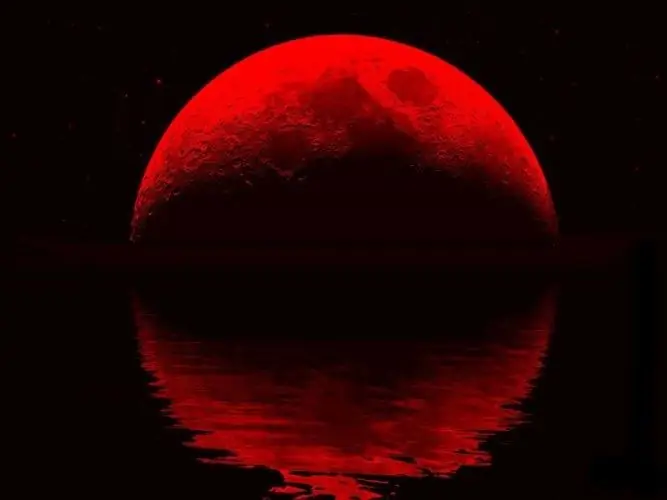It is believed that the color of the lunar disk can determine the weather for the coming days and even predict some events. Even in ancient times, people watched with fear the appearance of the red moon, believing that it was a harbinger of strife or the outbreak of war. Modern researchers have found a scientific explanation for the red color of the night star.

Instructions
Step 1
The moon can have a wide variety of shades - from the usual yellow to orange and blood red. Most often, the unusual color of the lunar disk is due to the state of the lower atmospheric layers. Small dust particles in the near-earth layer tend to absorb the red part of the spectrum to the greatest extent and scatter red color well. For this reason, all objects in the field of view acquire a reddish, and sometimes more saturated bloody hue.
Step 2
The highest dust content in the lower atmosphere is observed in dry and windy weather. Sometimes the reddening of the moon becomes more pronounced due to volcanic eruptions, during which ash is carried to a considerable height. For example, in mid-June 2011 in Africa and Asia, the Moon appeared blood red when one of the Chilean volcanoes erupted, accompanied by the release of ash. This event coincided with a deep lunar eclipse, in which the Earth's satellite already acquires a copper color.
Step 3
At that time, there was so much ash in the air that the moon appeared bright red or orange. This phenomenon was especially well observed in Asia. The reddening of the moon actually led to some unpleasant events: due to the abundance of ash, many flights were canceled, thousands of residents were evacuated in the area adjacent to the volcano. Of course, today it would never occur to anyone to associate these events exclusively with the color of the lunar surface.
Step 4
A lunar eclipse, as already mentioned, can also change the appearance of the moon. During the onset of a partial or total lunar eclipse, the Moon does not disappear from sight, but acquires a dark red hue. Why is this happening? Even in the phase of a deep eclipse, the Earth's satellite is illuminated by the sun's rays, which pass tangentially to the earth's surface. The Earth's atmosphere is transparent to the rays of the orange and red parts of the spectrum, which explains the copper color of the Moon during an eclipse. Dust particles only enhance this effect.







